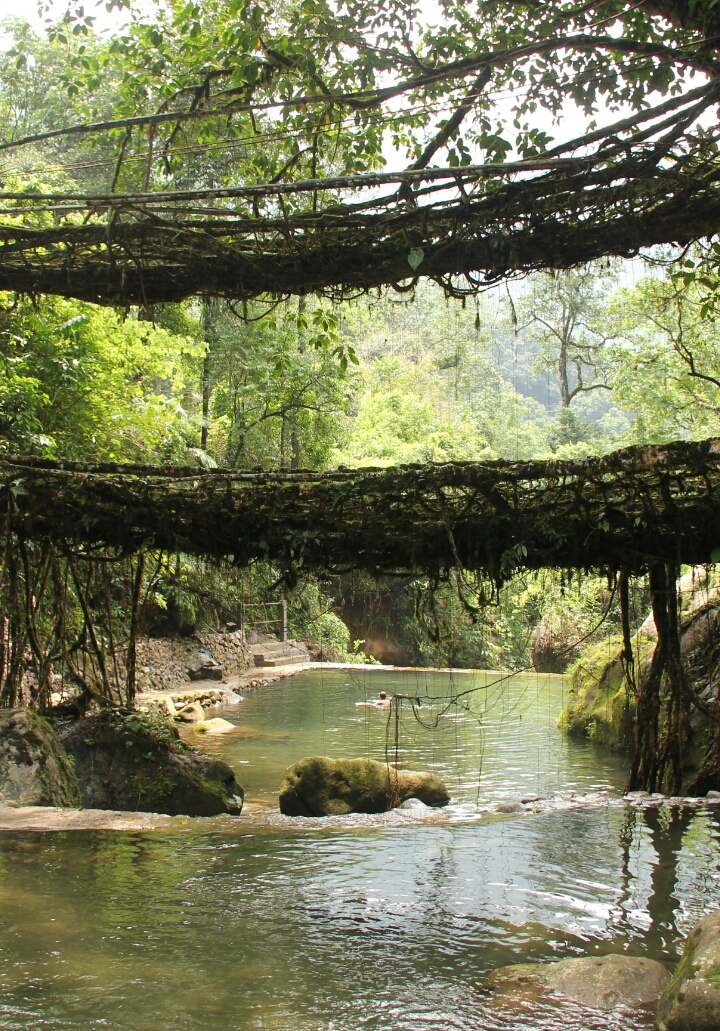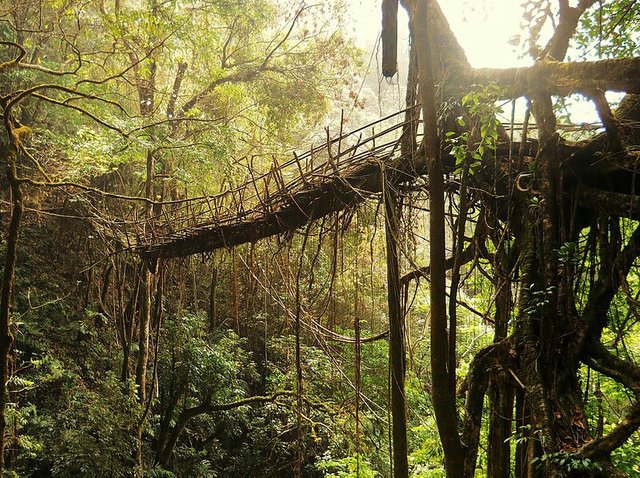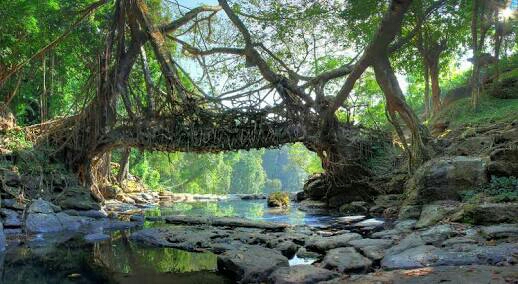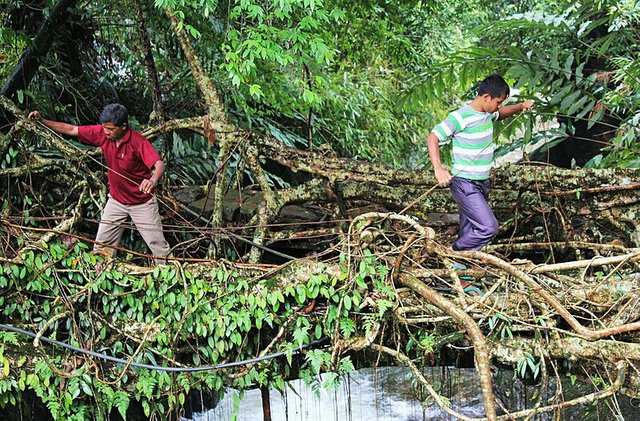Facts to know about India-series-#1-The Living Root Bridge
Hello Everyone!
It's the very first post of my new series-'Facts to know about India'.Well it is a series where I will try to bring out some of the worth visiting destinations and some amazing facts about India.In short A to Z of India.
Why I thought to make a series about it :
See India is a mixture of vast different cultures, holy sacred religions, people from different backgrounds, different languages.Well one may think it creates a chaos among us.But NO, Indians live peacefully with a 'BROTHERHOOD' bond creating a manmade 'RAINBOW'.What I thought was to draw a positive attention of people away from India as some have a negative view about India and Indians-bitter truth!
The Living Root Bridges :
Today's topic is about the 'Living Root Bridges' found In the state of Meghalaya, a north eastern region of India.Some are found in Nagaland.Both of these states are our neighbouring state as well.
What are living root bridges? :
These are bridges grown from the aerial roots of trees mainly 'Rubber' and these handmade trees are not built but grown.It serve as a very good transportation way for the people belonging to mountaineous terrain.These bridges can be 50m long and have 1.5m width.They can bear the weight of 500 people at the same time.Just imagine how strong architecture needs to do it.Well the irony is that these are handmade by local khasi people and none of them are engineer.One can say these are eco friendly bridges.They do not cut trees to make bridges instead they use trees to sort out with their needs.These people proves that our all needs can be found within nature rather than starting to contribute to the unstoppable rate of pollution.
History :
It can not state the exact time when these bridges are created but can note that Liutenant H Yule astonished about the Cherrapunji's Living Root Bridges in 1844.Two tribes- Khasi and Jayantia contributed to the creation of these living root bridges.
Some examples :
The double living root bridge is an exmple of rich architecture.Many tourists come to visit this every year.This bridge is believed to have a lifetime of over 500 years.

The longest living root bridge of Pynursla has a length over 50m.It is used by the residence of Mawkyrnot and Rangthylliang village.

The living root bridge of Mawlynnong is another example of it.It may be note that Mawlynnong is the Cleanest Village of India.

How to grow such bridges? :
It involves several steps as the method to create such bridges.A living root bridge is formed by guiding the pliable roots of the ficus elastica commonly called rubber tree across a stream or river, and then allowing the roots to grow and strengthen over time until they can hold the weight of a human being. The young roots are sometimes tied or twisted together, and are often encouraged to combine with one another via the process of Inosculation.
Sometime the whole bridge is grown by manipulating the roots by hands and without the involvement of any material.

Many more methods are there but i would like to skip them as it will make the article lengthy.
It may be noted that these living roots are not only bound to made bridges but also several structures such as ladder, staircase etc.
Thank you for going through my post :)
You can help my movement by resteeming the post.As it will help the post to get a greater audience.
@originalworks
The @OriginalWorks bot has determined this post by @splash-of-angs63 to be original material and upvoted it!
To call @OriginalWorks, simply reply to any post with @originalworks or !originalworks in your message!
To nominate this post for the daily RESTEEM contest, upvote this comment! The user with the most upvotes on their @OriginalWorks comment will win!
For more information, Click Here!
tamm likhiso vai
Thnk u bhai.. ! :)
they are fantastic!
I love the root forms of rubber trees and the other ficus too.
I have dreamed of one place, maybe it is in India.
It is a graveyard with all the graves covered in ficus roots
good article, and for me you can write as long an article as you want.
but I admit that many people don't like long articles
I tried to make it brief but with the flow of writing it became little lengthy.I will take care of that by now.Thank you for your suggestion :)
This post recieved an upvote from minnowpond. If you would like to recieve upvotes from minnowpond on all your posts, simply FOLLOW @minnowpond
You should specifically write about things in the north-east in this series. There is so much about the north-east that even the rest of India, much less the rest of the world, doesn't know about.
Yes i agree with you and yeah i will try to write more article about north-eastern part.it's my duty to promote my country as well as my region.
Moja bhai.. 👌
Thank you bhai :)
Congratulations! This post has been upvoted from the communal account, @minnowsupport, by splash-of-angs63 from the Minnow Support Project. It's a witness project run by aggroed, ausbitbank, teamsteem, theprophet0, someguy123, neoxian, followbtcnews/crimsonclad, and netuoso. The goal is to help Steemit grow by supporting Minnows and creating a social network. Please find us in the Peace, Abundance, and Liberty Network (PALnet) Discord Channel. It's a completely public and open space to all members of the Steemit community who voluntarily choose to be there.
This post has received a 1.56 % upvote from @drotto thanks to: @banjo.
Wonderful post... I never knew about these bridges. Beautiful shots too! :)
Superb post. Loved it. I am an Indian. But I had never heard about these root bridges. Although I have been to Sikkim and Assam side. Very intriguing and exotic. Great photos and great text.
Glad that you liked my post. Yeah some things are still far from indian media or any social sites. I just tried to draw the attention of that interesting fact.
Be friends :)
My pleasure. thanks for sharing an awesome post. Would love to see your future posts :)